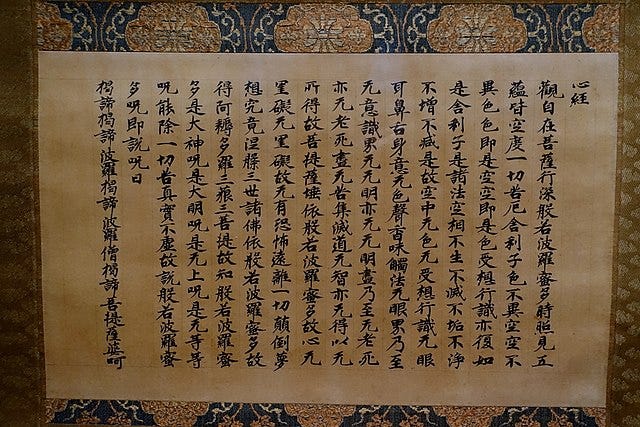Form is emptiness, emptiness is form
Exploring Zen's most radical invitation
I am larger, better than I thought,
I did not know I held so much goodness.
Walt Whitman[1]
One of the most important lines in all of Zen’s many texts is found in the middle of the Heart Sutra. The Heart Sutra is chanted every day in Zen monasteries and frequently at other Zen gatherings.
It is part of a larger commentarial Buddhist literature called the Prajnaparamita cycle. The literature of great wisdom. It is an apophatic literature, that is it attempts to point to the true by addressing what the true is not. Lots of not this and not that in the Prajnaparamita.
One thing I personally love about the Heart Sutra specifically is that its origins are controversial. At least in some corners of the academic community. There are a number of Buddhist texts in Chinese that do not have Sanskrit or Pali originals and are commonly believed to be apocryphal. There is a Sanskrit version of the Heart Sutra.
Then in 1992 the widely respected academic Jan Nattier suggested the Sanskrit Heart Sutra was in fact a back-translation from the Chinese. Since then, the independent scholar Jayarava Attwood has followed this thesis in considerable detail.


